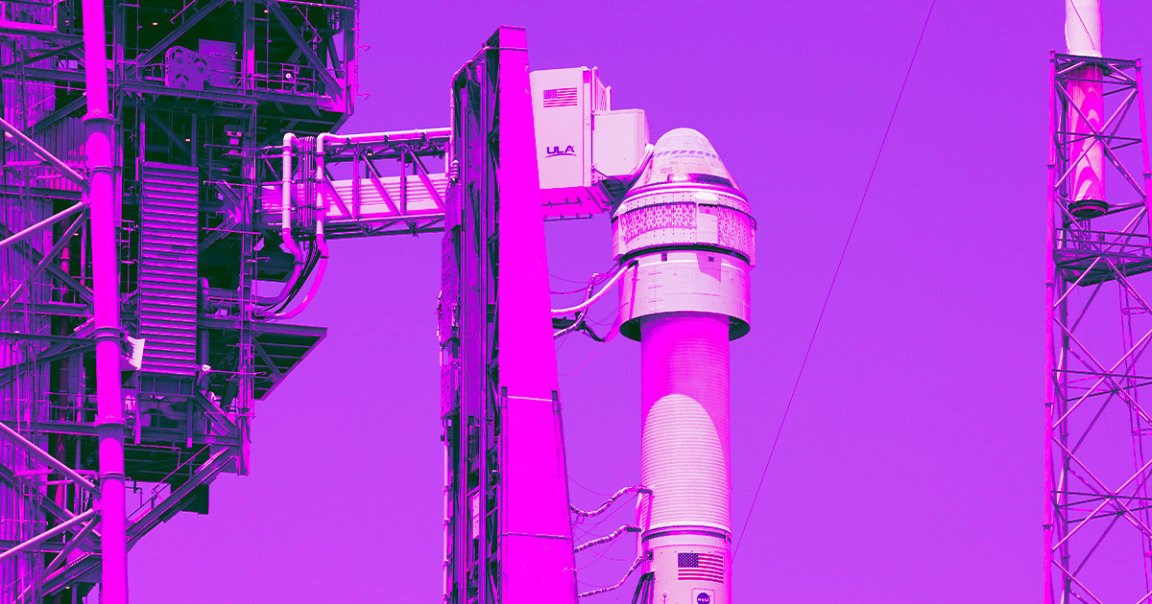
Slow Leak
Boeing’s Starliner space capsule has been marred by endless setbacks. Just ask poor NASA, which has been waiting on the spacecraft to be ready to ferry astronauts to the International Space Station since 2014.
The latest blow was a small helium leak discovered earlier this month, which delayed — yet again — the long-awaited launch of its first crewed mission.
But that issue is apparently no big deal. At a news conference on Friday, Boeing and NASA said they were going to proceed with the launch without fixing the leak, in a decision that is bound to raise eyebrows as the company is already mired in controversy over the safety of its aircraft.
“We can handle this particular leak if that leak rate were to grow even up to 100 times,” Steve Stich, manager of NASA’s Commercial Crew Program, said at the conference, as quoted by Agence France-Presse. In other words, even if the leak were to become significantly worse, its impact on the safety of the launch would be minimal.
Double Trouble
Starliner’s last attempted launch, which was on May 6, was unceremoniously called off when the astronauts were already on board. Cued in by a strange “buzzing” sound, officials discovered a faulty oxygen valve on the United Launch Alliance’s Atlas V rocket.
That wasn’t necessarily Boeing’s fault. But in the aftermath of the scuttled launch, a flaw was found on the Starliner itself: the helium leak on the spacecraft’s service module, caused by a defective seal. The issues are apparently unrelated, and Stich said that the leak only affects one of Starliner’s 28 attitude-control thrusters, per AFP.
Flying with a leak isn’t as bad as it sounds, Stich added, arguing that leaks haven’t stopped launches from being successfully carried out in the past, including with SpaceX’s Dragon capsule, which is NASA’s vehicle of choice for transporting astronauts to the ISS.
Bad Look
But it’s a decision that’s bound to leave observers uneasy. Boeing vice president Mark Nappi said the process of replacing the faulty seal would be “quite involved,” per AFP, because Starliner would need to be disassembled at its factory and tested all over again.
However standard a practice that may be, that logic ends up sounding like the stingy cost-cutting at Boeing that has allegedly led to all those serious defects in its airplanes — which seem to be falling apart with alarming frequency.
After the scrubbed launch, a NASA contractor, ValveTech, even warned that another Starliner launch should be halted before “something catastrophic happens.”
All told, many aren’t feeling confident in Boeing’s safety record right now. Starliner’s new launch date is set for June 1 — but we’ll have to see if that finally pans out. Hopefully, for the astronauts’ sake, nothing goes wrong.
More on Boeing: Turbulence Kills Passenger on Boeing Jet, Puts Seven in Critical Condition